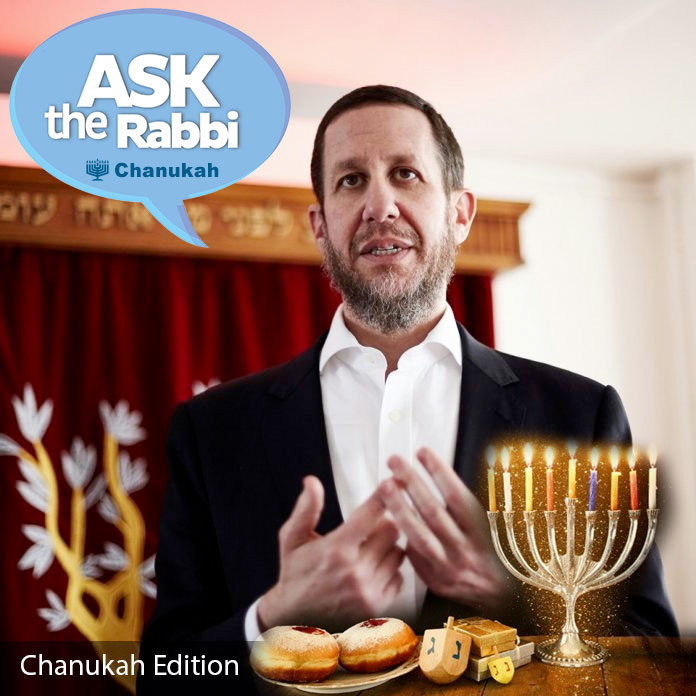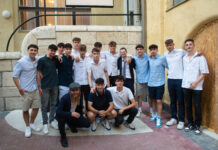
Dear Rabbi
I loved your reply last week explaining the idea of gift giving on Chanukah. So much so, that I also thought it was a pagan idea and never bough gifts. This year, thanks to your column, I did. As you said, it really was a miracle.
I was wondering whether you could explain however the reason for the cholesterol churning, gastro ordeal of latkas and donuts. Whatever happened to looking after our health? And if I could be cheeky I’d like to slip in the dreidel as well. Does that have a real Jewish basis or is it just kosher gambling?
Richard
Dear Richard
I know someone who had a reverse Chanukah miracle. He had enough donuts to last him eight days and ate them all in one day.
Donuts are deep fried in oil and so base themselves on the same theme as the latka which is the most famous delicacy associated with Chanukah. To be sure it is more of a relatively modern day innovation. After all, potatoes were not readily available on the continent for a long time. But the issue here isn’t the Latke per se. It’s the ingredient – the oil – which of course cannot be consumed on its own. We eat the Latka precisely because it requires deep frying in oil which reminds us of the miracle of the oil that lasted in the Temple Menorah for eight days, even as there was only enough for one day.
Let’s think about oil. Oil is integral to Jewish ritual, both in its content and its symbolism. Oil was used on the Altar. Oil was used to anoint kings and priests. Oil of course was used in the Menorah. We can talk about oil as fattening or a waste of world resources but where would Judaism be without oil? Oil is distilled essence. It is separate hence it rises to the top. At the same time it spreads about, thus permeating throughout. That is the story of the Jew; that is the uniqueness of the Jew; rising to the top while spreading throughout – being a light onto the nations.
In that sense the Latke reminds us of our uniqueness as Jews and our special mission in this world. Chanukah is about the spiritual victory. The Greeks had one primary objective – to assimilate the Jew into one hotchpotch of multicultural idealism. So I eat the Latka because there are so many assaults on basic Jewish mores and principles today. Barriers are coming down and more and
more people are scrambling over. We need the Latke as a critical reminder of our paramount responsibility as Jews.
Latkes are filled with oil – which connotes anointing, royalty, priesthood, majesty; oil – it’s about light, it’s all about permeation – it’s about maintaining our regal bearing of Jewish pride.
You make a Latke by taking a potato and grating it thus reminding us, how the life of the Jew through the ages may have been grated, shredded, torn apart. But did that get us down? No! If life gives you lemons, make lemonade. If life shreds your potato, make Latkes.
But you’re right. Latkas like donuts are not antibiotics where you have to take two a day for eight days.
The origin of the dreidel, it is said, dates back to the very time of the Greek-Syrian rule over the Holy Land – which set off the Maccabean revolt that culminated in the Chanukah miracle. Learning Torah was outlawed by the Greeks, a “crime” punishable by death. So the Jewish children resorted to hiding in caves in order to study. If a Greek patrol would approach, the children would pull out their tops and pretend to be playing a game. By playing dreidel during the festival of Chanukah we are reminded of the courage of those brave children.
What are the rules of the game? Well, there are four Hebrew letters on each of the sides of the dreidel. Nun – Gimel – Hay – Shin. This is intended as an acronym for “Nes Godol Haya Sham” – “A great miracle happened there,” in reference to the Chanukah miracle. Everyone contributes something to the pot and each takes a turn spinning the dreidel. If it lands on a Nun you get nothing. On a shin – you have to pay into the pot. On the hay you get half the pot and if it lands on gimel you’ve hit the jackpot and you take all. Then you repeat the process again.
Everything in life contains a lesson and the dreidel would be no exception. So what lessons can we learn from a spinning top? Consider the varied letters reflect the kaleidoscope of life. Sometimes we have “gimmel days.” Everything is on an even keel – going our way. Life is good! We feel as if we’ve hit the jackpot!
To the opposite end of the spectrum we have “shin days” where we feel we are paying in – expending so much energy. We feel as if the world has turned against us – we’re physically and emotionally depleted.
There may be “nun days” – where everything is simple though hardly productive and “hay days” which for the most part are good with its occasional hiccups.
The important thing to remember is: All the letters make up nes godol haya sham – “a big miracle happened there.” In good times and in more challenging times – on average days or even not so average days – G-d is with us every step of the way. Don’t attribute your successful days to your own prowess, and don’t despair in the face of whatever challenges. Acknowledge the reality of G-d in every part of your daily experience and always strive to be continuously productive throughout.
Happy Chanukah!









